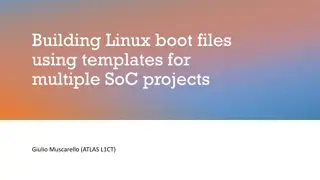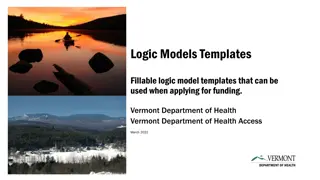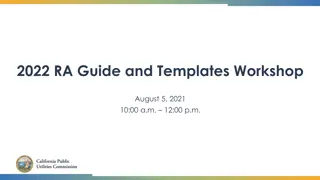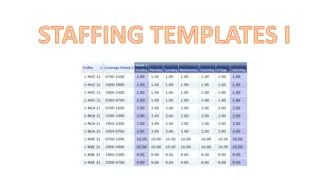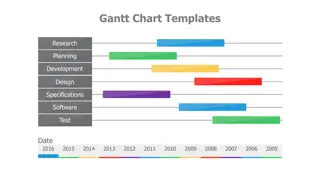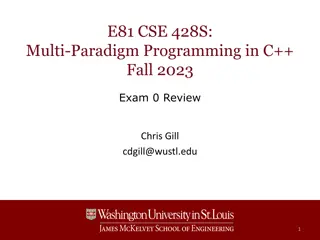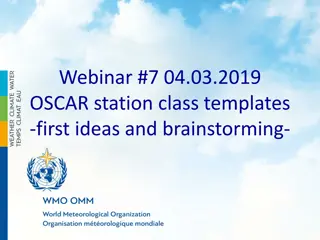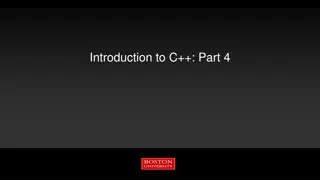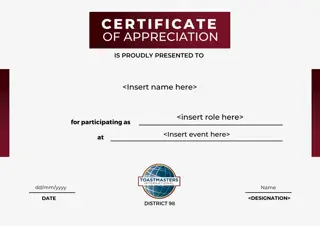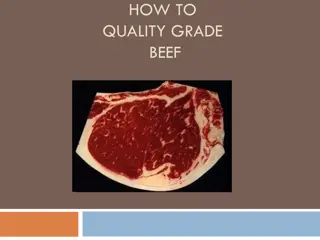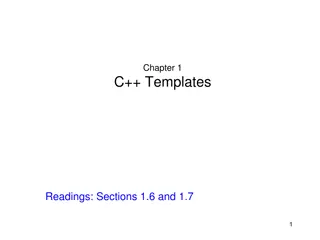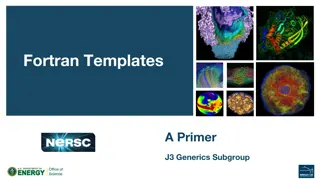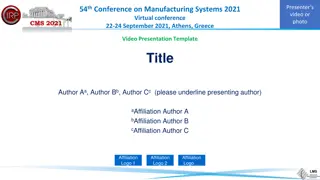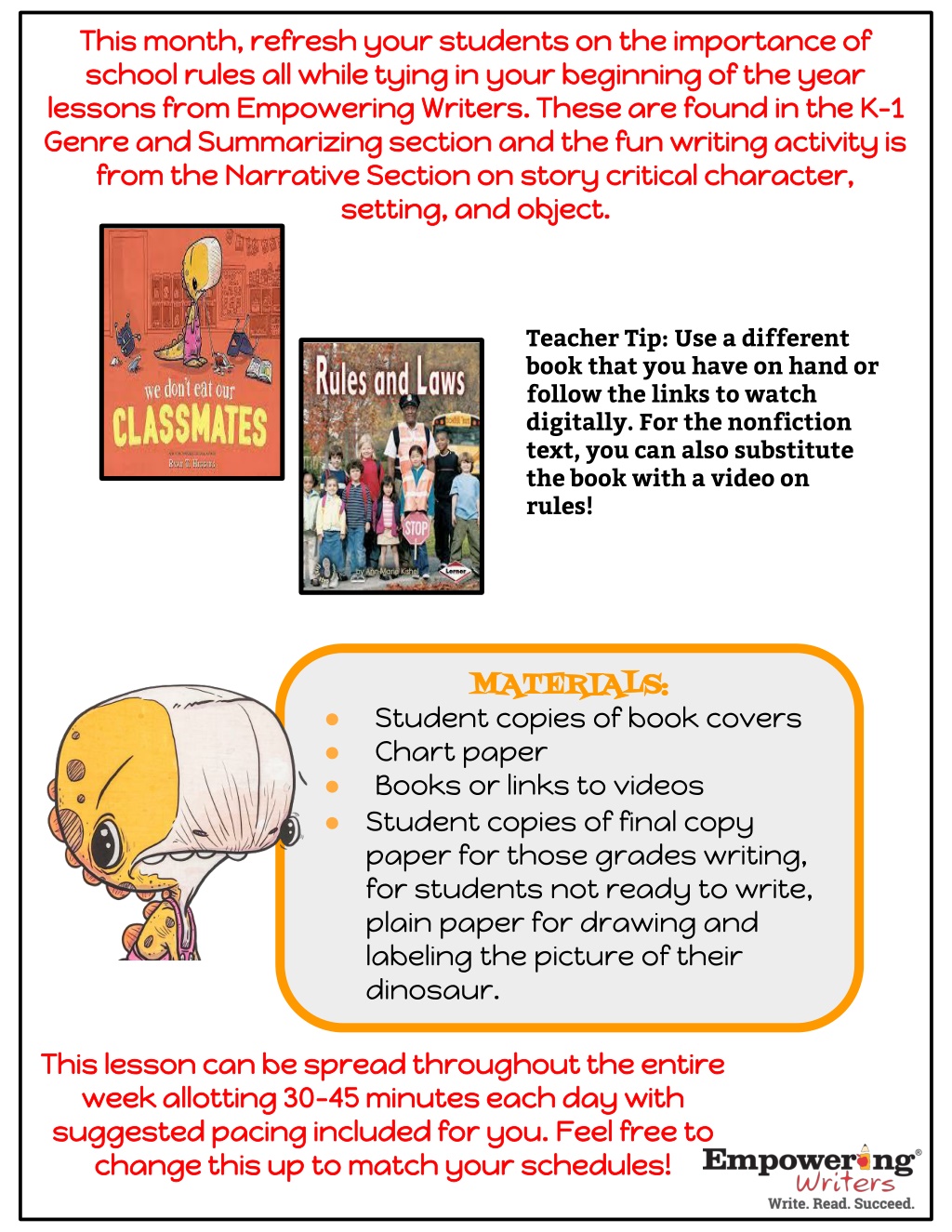
Engaging Students in Understanding School Rules and Story Elements
Refresh your students on the importance of school rules while incorporating lessons on narrative elements in storytelling. Utilize engaging activities and book covers to help students identify genres, story critical characters, settings, and objects. Enhance their understanding through fun writing activities and collaborative discussions.
Download Presentation

Please find below an Image/Link to download the presentation.
The content on the website is provided AS IS for your information and personal use only. It may not be sold, licensed, or shared on other websites without obtaining consent from the author. Download presentation by click this link. If you encounter any issues during the download, it is possible that the publisher has removed the file from their server.
E N D
Presentation Transcript
This month, refresh your students on the importance of This month, refresh your students on the importance of school rules all while tying in your beginning of the year school rules all while tying in your beginning of the year lessons from Empowering Writers. These are found in the K lessons from Empowering Writers. These are found in the K- -1 1 Genre and Summarizing section and the fun writing activity is Genre and Summarizing section and the fun writing activity is from the Narrative Section on story critical character, from the Narrative Section on story critical character, setting, and object. setting, and object. Teacher Tip: Use a different book that you have on hand or follow the links to watch digitally. For the nonfiction text, you can also substitute the book with a video on rules! MATERIALS: Student copies of book covers Chart paper Books or links to videos Student copies of final copy paper for those grades writing, for students not ready to write, plain paper for drawing and labeling the picture of their dinosaur. MATERIALS: This lesson can be spread throughout the entire This lesson can be spread throughout the entire week allotting 30 week allotting 30- -45 minutes each day with 45 minutes each day with suggested pacing included for you. Feel free to suggested pacing included for you. Feel free to change this up to match your schedules! change this up to match your schedules!
In the book cover lessons, students recognize that the covers of books provide hints about genre. Key points to remember when presenting books are included for you in the notes section on the slides. Be sure to check out the modeled lesson on book covers in your Empowering Writers Guide to see what this lesson looks like in a classroom! Day ONE: Narrative Book Covers Day ONE: Narrative Book Covers Present the book We Don t Eat Our Classmates. Be sure to hit key points included in the notes for each slide. Read the book. Summarize the book together as a class using the EW Summarizing Framework. Students then add the summary in their book covers. Day TWO: Narrative Book Covers Day TWO: Narrative Book Covers Using the blank narrative diamond on the inside of the book cover, students will draw the sequence of events that happened in the beginning, middle, and end of the story. Finally, students glue or draw the book cover onto the front of the book they made.
BEGINNING MIDDLE END
Students will identify story critical characters, settings, and objects in narrative stories. Be sure to watch the teacher background video in your EW Guide for teacher tips and/or the modeled lesson to see what this looks like in the Day THREE: Story Critical Elements Day THREE: Story Critical Elements classroom! If I were a dinosaur, I would eat... ? Students will be pretending to be a dinosaur of their choice. They will also choose a critical object (their favorite food to eat as a dinosaur) and critical setting ( where they would choose to be to eat this food. Begin the lesson by charting possible critical elements with class. Included is a sample of what your chart could look like. Then chart other words to replace eat/drink together as a class. This is just like Vocabulary Lesson #3 No Go Words in your EW Guide if you are a K/1 teacher. An example of this is also included for you. Once the vocabulary building has been done, model the story critical elements writing activity for the teacher. (Example on slide 10) Then students complete their own writing piece from slide 11. If time allows, use the final copy paper from slide 12 to have students draw themselves as the dinosaur eating their favorite food in the setting they chose. Students will get practice with writing a final copy of their work from the brainstorming page.
If I were a dinosaur CHARACTER: What kind of SETTING: OBJECT : What will you eat? Where at? dinosaur are you? Library Swimming pool Cafeteria Chocolate cupcake Iced coffee Milkshake Stegosaurus Pterodactyl T-Rex
Other words for Eat Drink Devour Chomp Munch Devour Sip gulp
Mrs. Reed the stegosaurus relaxed in the library, and devoured her iced coffee.
In the book cover lessons, students recognize that the covers of books provide hints about genre. Key points to remember when presenting books are included in the notes section on the slides. Be sure to check out the modeled lesson on book covers in your Empowering Writers Guide to see what this lesson looks like in a classroom! Day FOUR: Informational Book Covers Day FOUR: Informational Book Covers Present the book cover Rules and Laws. Be sure to hit key points included in the notes for each slide. Read a nonfiction book on rules/laws or watch the video. Summarize the book together as a class using the EW Summarizing Framework. Students then add the summary in their book covers. Day FIVE: Informational Book Covers Day FIVE: Informational Book Covers Using the blank informational pillar on the inside of the book cover, pull out the topic learned about and write at the top. Then pull out two facts learned and add to the boxes underneath. Finally, add a conclusion to the pillar. Then, students glue or draw the book cover onto the front of the book they made.
Fact Introduction/Topic Conclusion Fact

